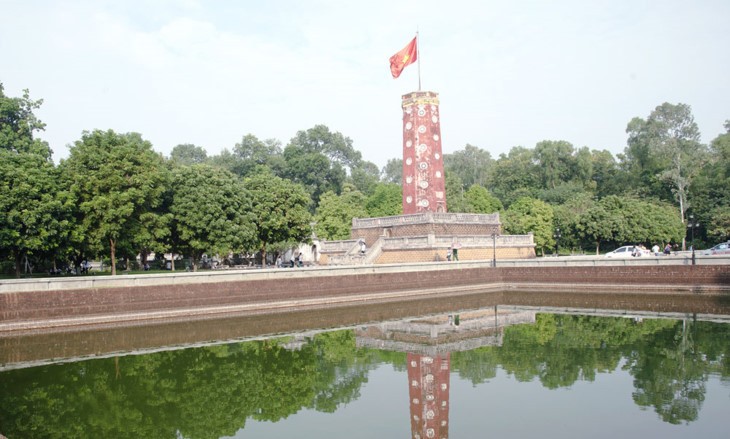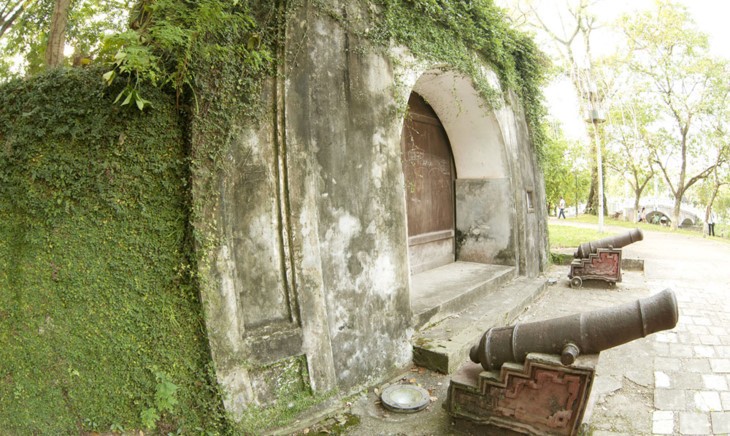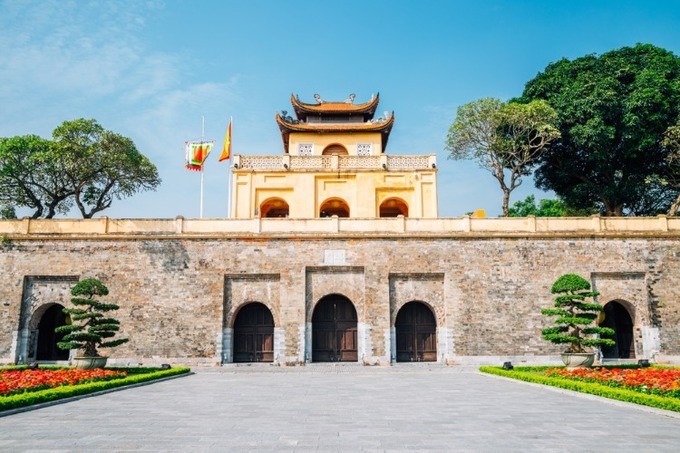(VOVWORLD) - First on our show today, we’d like to welcome to VOV a new listener from the US, Mr. Robert Page, who reported an excellent signal for our show from July 28 on the frequency of 7315 khz.
B: Thank you, Mr. Page, for tuning in. We’ll send you a QSL card to confirm your report, but we have not received the USB containing an audio file of the program you heard. It might have gone missing in transit.
A: Our program is now also available on the internet at vovworld.vn and on our mobile app at VOV media. We hope to receive more regular feedback from you.
 Son Tay ancient citadel Son Tay ancient citadel |
B: Now back to the issue of our letters to Pakistani listeners which have been repeatedly returned to us. After days of investigation, we have found down the reason. Last week, we got an official confirmation from the Hanoi post office that items sent from Vietnam to Pakistan have been temporarily suspended due to a problem with our air transport services. While we’re searching other ways to send you postal mails, we will confirm your reception reports through emails. We apologize for any inconvenience and misunderstanding that have arisen from this problem and hope that it will be fixed soon. We hope that you will continue listening to our programs despite the temporary mail suspension. We greatly appreciate your loyalty to VOV and treasure all your feedback.
A: This week, many VOV listeners said they wanted to learn more about ancient citadels in Vietnam.
B: In today’s Letter Box, let’s go ahead and check out some of them. First on our list is Son Tay citadel, 40 kilometers from the center of Hanoi. It is a unique historical relic which witnessed Vietnam’s resistance struggle against foreign invaders. Son Tay citadel was recognized as a National Architectural Historical Relic in 1994.
 Son Tay ancient citadel Son Tay ancient citadel |
A: The citadel was built by King Minh Mang in 1822 to defend the western approach of the city of Thang Long, which is now Hanoi. The architecture of the relic site is undamaged, with massive citadel walls and two gates in the West and South.
B: The citadel walls were made of laterite and its gates were made of bricks. On each side of the citadel there is a gate guarded by cannons and reached via a stone bridge. In the past there were four brick bridges across the moat, but only two bridges exist today.
A: The outer perimeter of the site is surrounded with bamboo. The Citadel has quadrilateral and trapezoidal cross-sections. There are many crannies at the top where soldiers could hide and shoot at an enemy attempting to seal the walls.
B: Inside is an octagonal 18-meter-high flag tower, which also served as an observation post. In 1940, a signal transmitter was installed on top of the tower to announce the time and transmit emergency warnings to the people. Kinh Thien Palace and the Vong Cung Gate are the site’s most outstanding architectural features.
A: Next, let’s move to Thang Long Imperial Citadel which covers more than 18 hectares, including the archaeological relics at 18 Hoang Dieu Street and the remnants such as the Hanoi flag pole, Doan Mon Gate, Kinh Thien palace, D67 House, Hau Lau, and Bac Mon Gate, the wall and eight gates of royal step-over places of the Nguyen Dynasty.
 Thang Long Imperial Citadel in Hanoi Thang Long Imperial Citadel in Hanoi |
B: The Thang Long citadel was built in King Ly Thai To in 1010 shortly after he moved the capital from Hoa Lu in the northern province of Ninh Binh to Thang Long, now Hanoi. Construction was completed one year later.
A: The Thang Long Citadel was built with three layers: the outermost round is called La Thanh or Kinh Thanh or the Citadel, surrounding the entire capital and along the bank of the Red River. The second round is called Hoang Thanh (Royal Citadel), with the main court, where mandarins lived and worked. The third and the smallest round in the center is the Forbidden City, where only the King, the Queen and some imperial concubines lived.
B: Thang Long imperial citadel was recognized as a World Cultural Heritage Site by UNESCO in 2010.
 Ho dynasty citadel in Thanh Hoa province Ho dynasty citadel in Thanh Hoa province |
A: Located 50 km in the northeast of Thanh Hoa city, the Ho dynasty citadel is a unique architectural complex built in 1397 by Ho Quy Ly, the founder and the first king of the Ho dynasty in Vietnam.
B: Situated in a magnificent landscape between the Ma and Buoi rivers in Binh Loc district, the citadel was built using large rocks and represents the development of architectural and construction techniques in Vietnam 6 centuries ago.
A: The large rocks weighing tens of tones were built up to a height of more than 10 m and manually assembled into a sophisticated arch shape.
B: The Ho Dynasty Citadel consists of three parts: La thanh, Hao thanh and Hoang Thanh, similar to the Thang Long Royal Citadel. La thanh was the outer round, about 4 km in circumference. Hao thanh was dug around the Hoang thanh, about 50m from the La thanh. This work was used to protect the Hoang thanh. The most unique feature of this citadel is the vault architecture.
A: More about Vietnam’s sights and sounds are available on our Discovery segment which is aired every Thursday. Keep tuning in!
B: In an email to VOV this week, Nusrat Zahan of Bangladesh wrote: “I’m 35 years old and a primary school teacher. I listen to VOV regularly when I have time. I record VOV programs on my smart phone. As a result, I’m always in touch with VOV. One of my favorite programs for weekend listening is the regular Sunday Show on VOV which provides listeners with in-depth knowledge on the many aspects of Vietnam and the life of the Vietnamese people.”
A: Thank you for tuning in to VOV. We hope to receive more feedback from you. In the Sunday Show segment this week, we will bring you a story about the wedding custom of the Ha Nhi ethnic minority group in the northern mountain province of Lai Chau. Check it out!
B: Richard Cook of the UK sent us a detailed technical reception report for our broadcast this week. He wrote: “Picking you up rather well on 7280 kHz for the news and mailbag. SINPO of 54444 occasional fading but a good signal overall on my s2000 and indoor wellbrook loop at 1900 UTC. I hope you have a good week and hope I get a nice QSL card.”
A: Eddy Prabowo of Indonesia listened to our broadcast from 00:06 to 00:27 UTC on August 11 on the frequency of 7315 khz and sent us some comments on technical reception: “Tuned in to the VOV English rebroadcast via WHRI on 7315 kHz, with SINPO 44444, the audio can be heard in good quality and strength. Only found occasional fading and noise splatter as usual.”
B: Thank you all, our dear listeners, for your detailed feedback on our broadcasts. They are very helpful and a source of encouragement for us. We’ll confirm your report with verification cards.
A: We welcome your feedback at: English Service, VOVworld, the Voice of Vietnam, 45 Ba Trieu street, Hanoi, Vietnam. Or you can email us at: englishsection@vov.org.vn. You’re invited to visit us online at vovworld.vn, where you can hear both live and recorded programs. Check out our VOV Media App available on both the IOS and Android platform to hear our live broadcasts. We look forward to your feedback on the mobile version of vovworld.vn. Once again, thank you all for listening. Goodbye until next time.